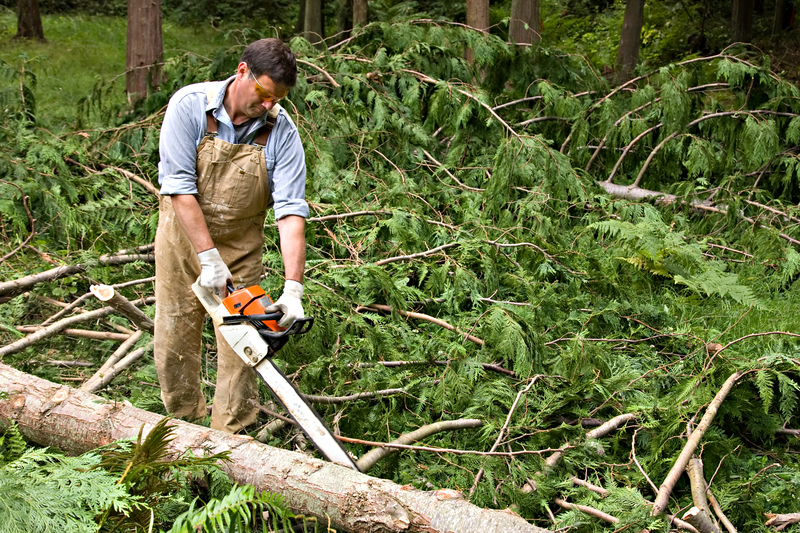Here are three timbercraft skills you absolutely need to master. These will not only make you more efficient, they'll also help keep you safe!
1. Felling
Trees fall in the direction of lean or, if straight, to the side with the heaviest branches. Straight or slightly leaning trees are the safest to cut. Determine the direction and degree of lean by using your ax as a plumb line. Hold it loosely by the handle, let the head dangle free, then compare the straight line of the ax with the tilt of the tree trunk.
Be Smart. Never attempt to fell a tree against the lean unless you’re experienced. Reject rotten snags that are likely to break at any point along the trunk, or trees with large dead limbs that can snap off when the trunk sways; they are called widow makers for a reason.
Determine Your Safety Zones
Make sure the tree has a clear path to fall and that you have an unimpeded path for escape. Mentally divide the perimeter around the tree into zones of relative safety before putting saw teeth or ax bit to wood. As the tree begins to topple, place your ax or chain saw (turn it off) on the ground and back away through your predetermined safety zone until you are beyond the reach of the fall. Be Smart. Never turn your back on a falling tree.
(1) Chop (or saw) the facing cut one-third to one-half of the way through the trunk on the side facing the direction of fall. Make the initial cut downward approximately at a 45-degree angle. Then make a second horizontal cut to remove the wedge or notch. Never chop at an up angle, as the ax head could glance off the tree and hit you. (2) Start the back cut in the same manner 2 inches above the facing cut, opposite the direction of fall. Stop when 1 to 2 inches of wood remains intact between the back cut and the facing-cut notch. This is called the hinge. As the tree starts to fall, move to safety.
Note: When making a back cut with a chain saw, you usually do not need to remove a notch. Simply cut horizontally into the tree.
Be Smart. If the facing cut is too deep, the tree may fall backward. Don’t make the back cut too deep or at the same level as the horizontal part of the facing cut, as the tree may spin on its trunk or kick back.2. Limbing
Chop or saw limbs in the direction in which they grow, typically toward the tree’s top. This will give you a wider chopping angle. And as you cut from the base of the tree upward, you won’t be standing in branches (as you would if you chopped in the other direction).
Be Smart. Keep the trunk between your body and the limb you intend to chop.
blocking a log3. Blocking
Cut blocks in 18- to 24-inch lengths, depending upon the size of your woodstove. To section blocks with an ax, drag a larger safety log alongside to absorb glancing blows. The log also steadies the trunk for cutting. If you’re using a bucksaw, place the hand that is steadying the log through the bow of the saw, to prevent getting cut if the blade jumps out of the cut. When blocking with a chain saw, make a series of cuts to within 3 inches of the other side of the log, never letting the chain touch the ground (which would dull it in a split second). Use a pole or pry bar to roll the log over, then finish the cuts.
Be Smart. Work on the uphill side because if the log were to roll toward you, the chain saw could jump out of the cut.
Have you tried any of these suggestions? What tips do you have for cutting down trees and other aspects of timbercraft? Share your thoughts in the comment section below!
Article Source: Field & Stream

Potentially life saving advice right here.